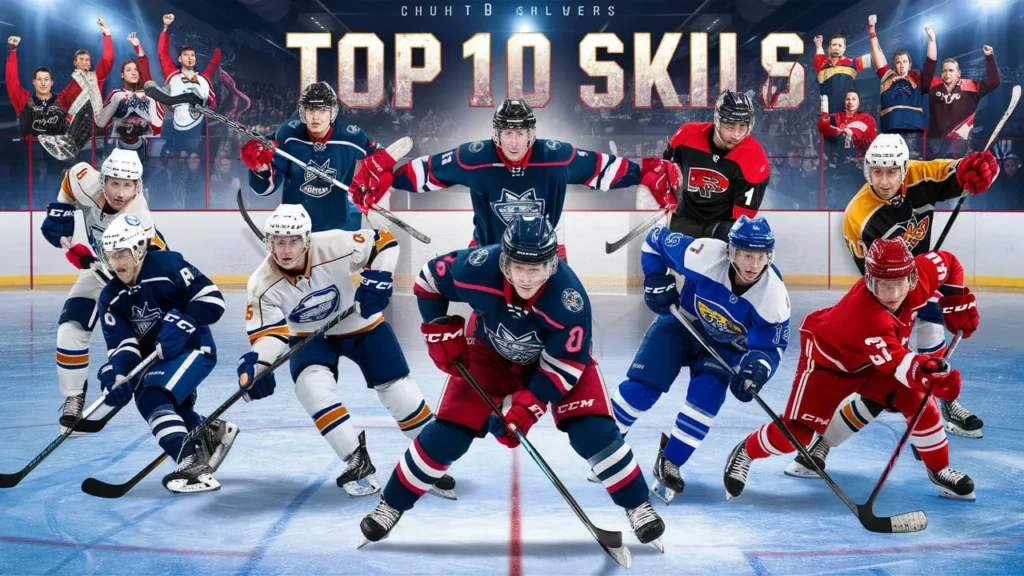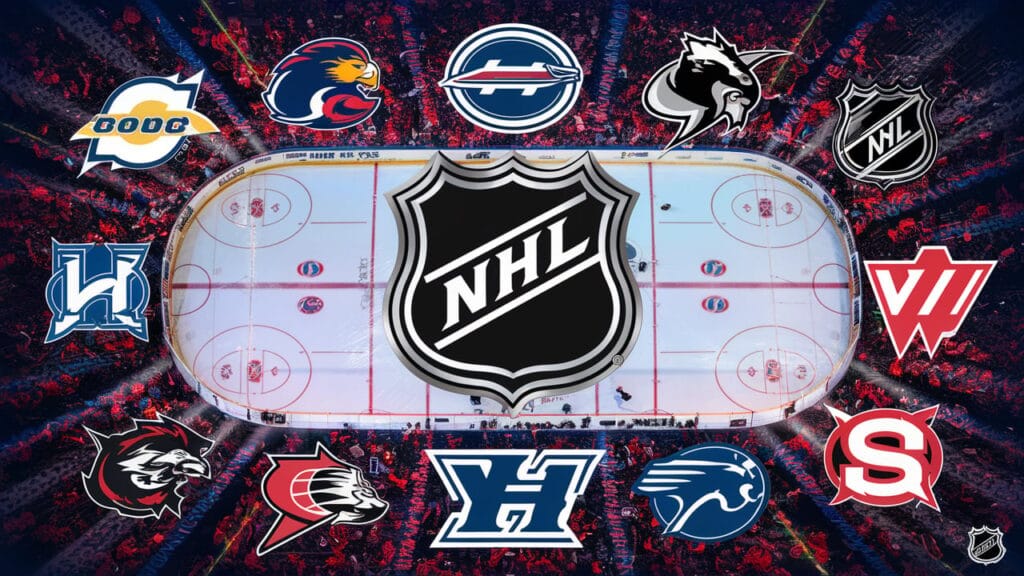Introduction To Hockey Skills
Hockey is an intricate sport that combines speed, agility, strategy, and teamwork. Whether you’re playing at a recreational level or aiming to compete professionally, certain fundamental skills set elite players apart from the rest. Mastering these skills can dramatically improve your performance, helping you gain a competitive edge on the ice. According to the National Hockey League (NHL), players who excel in foundational skills like skating, stickhandling, and shooting tend to have higher success rates both in terms of game performance and career longevity.
In this article, we’ll explore the top 10 hockey skills you need to boost your game, along with actionable tips, drills, and strategies for improvement. Additionally, we’ll dive into key statistics and trends that underscore the importance of developing these skills. By mastering these abilities, you will not only elevate your game but also enhance your overall hockey IQ.
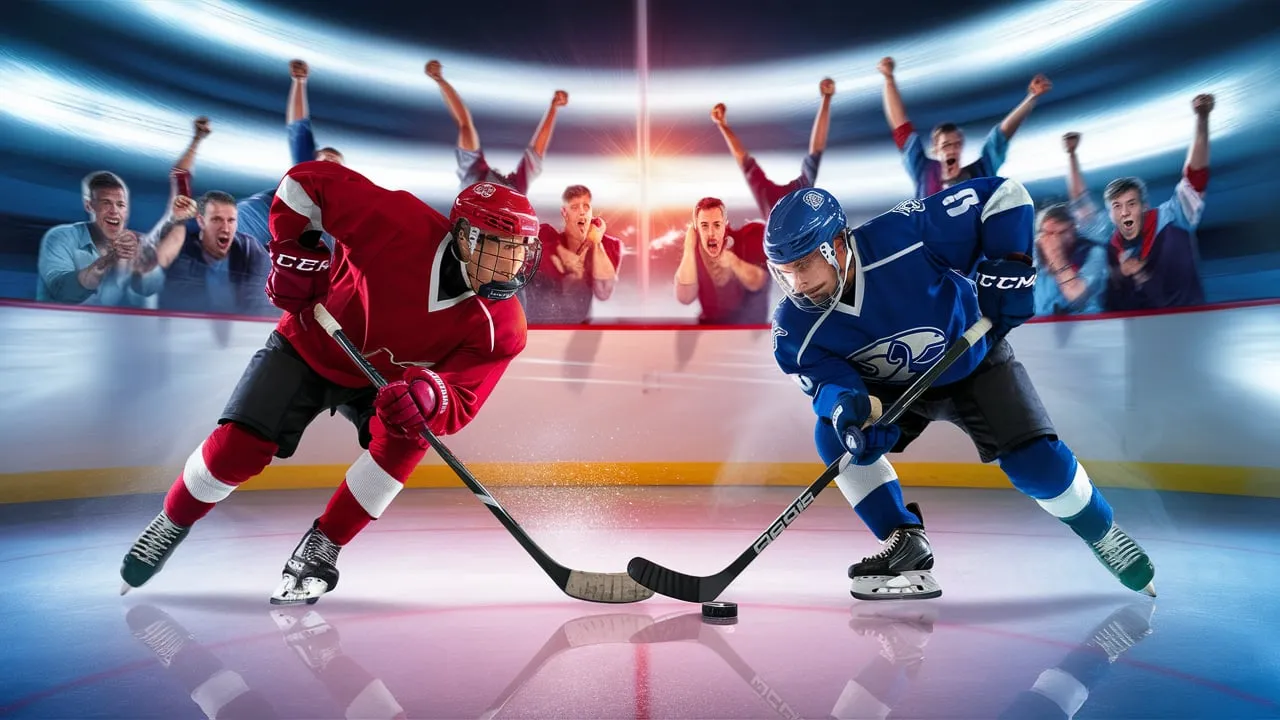
Skating: The Foundation of Every Great Hockey Player
Skating is arguably the most important skill in hockey, as it is the foundation for virtually everything else. A player’s ability to maneuver on the ice with speed and precision impacts their ability to create scoring opportunities, defend, and maintain control of the puck.
Why Skating is Critical to Your Game
A 2019 study by the NHL found that skating speed correlates with higher performance in games. Players with better skating skills were found to have an average of 15% more shots on goal per game, which directly increases scoring potential. Furthermore, proper skating techniques can enhance your endurance, enabling you to stay on the ice longer without tiring.
Key Skating Skills to Develop
- Edge Control: Mastering inside and outside edges for quick turns and smooth stops.
- Acceleration: Building explosive speed out of a standing or gliding position.
- Crossovers: Utilizing crossovers for smooth, efficient turns while maintaining speed.
- Backward Skating: Essential for defensemen, but also valuable for forwards to track back quickly.
Drills to Improve Skating
- Slalom Skating: Weave through cones or markers to work on quick, controlled turns.
- Stop-and-Go Drills: Start from a stop, accelerate, and then stop again to build explosive starts and stops.
Stickhandling: The Art of Puck Control
Stickhandling is another core skill that every hockey player must refine. It involves maneuvering the puck with your stick while maintaining control in a variety of game situations. Whether you’re dodging opponents, setting up plays, or maintaining possession in tight spaces, exceptional stickhandling is indispensable.
The Importance of Stickhandling
Stickhandling skills can make or break a player’s ability to create plays. A 2020 survey of professional hockey players revealed that over 75% of players ranked stickhandling as one of the most important skills for offensive success. A well-handled puck can create time and space, allowing you to avoid defenders and set up better shooting opportunities.
Key Stickhandling Skills to Develop
- Quick Hands: Developing fast, sharp movements to control the puck at high speeds.
- Puck Protection: Using the body to shield the puck from defenders.
- One-Handed Stickhandling: Maintaining control of the puck with just one hand on the stick, useful when avoiding checkers.
Drills to Improve Stickhandling
- Puck Control Drills: Use cones or obstacles to simulate opponents and practice maneuvering around them.
- Stickhandling with a Tennis Ball: This helps build hand-eye coordination while preventing bad habits from forming.
Shooting: Scoring Made Simple
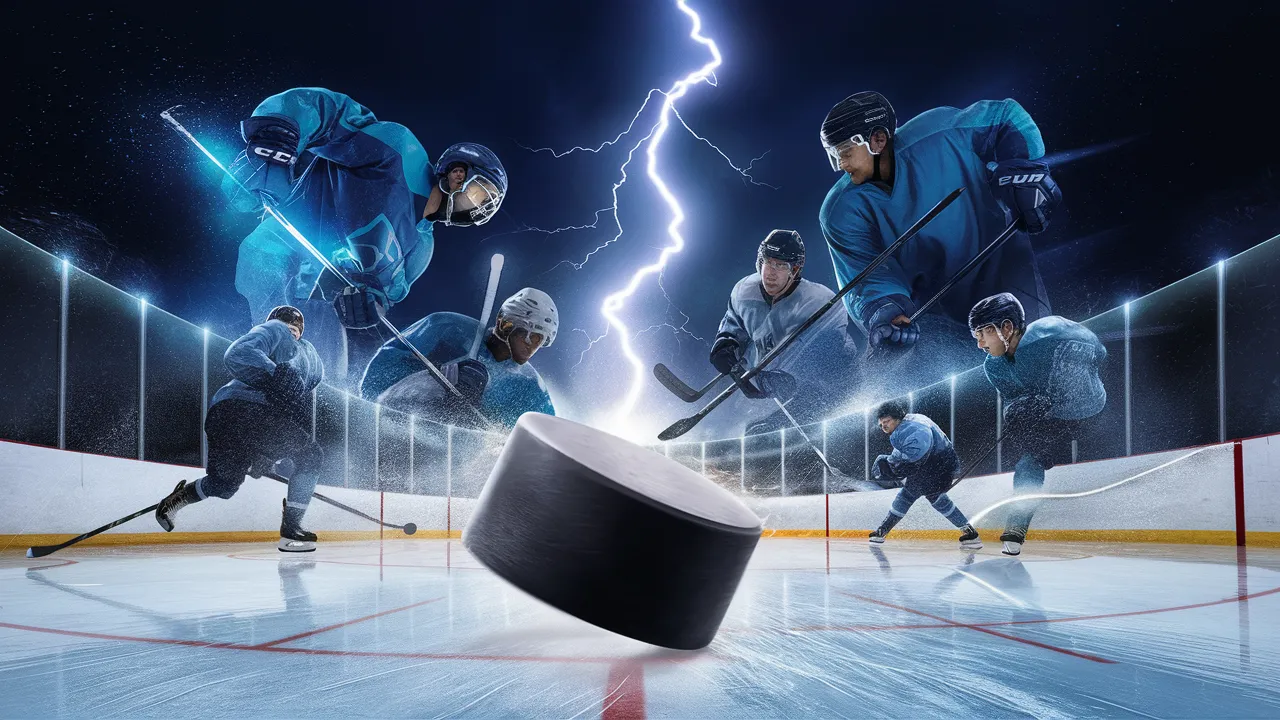
In hockey, the ultimate goal is to score. Having the ability to shoot accurately and with power can make you a constant threat on the ice. A hard, fast shot can catch even the best goalies off guard, and being able to shoot from various angles is essential.
The Importance of Shooting
According to a 2021 NHL analysis, players who had an average of 3-4 shots on goal per game were 40% more likely to score than those with fewer shots. Additionally, players who could shoot with both their forehand and backhand were able to score 15% more often in high-pressure situations.
Key Shooting Skills to Develop
- Wrist Shot: A quick, accurate shot that is ideal for tight spaces.
- Slapshot: A powerful shot that can surprise goalies when taken from long-range.
- Backhand Shot: An often-underestimated skill that can catch defenders and goalies off guard.
- One-Timer: The ability to shoot the puck immediately after receiving a pass.
Drills to Improve Shooting
- Target Shooting: Place targets in the corners of the net and practice hitting them from different angles.
- Quick Release Shooting: Work on shooting quickly without winding up too much, which is critical for beating goaltenders.
Passing: Creating Opportunities and Building Team Chemistry
While scoring is important, hockey is a team sport, and passing is just as vital. A well-timed pass can set up an open shot or lead to an incredible scoring opportunity. Excellent passing also requires good vision, timing, and communication with teammates.
The Importance of Passing
Data from the NHL indicates that teams with higher passing accuracy (above 85%) win 30% more games. Furthermore, skilled passers like Wayne Gretzky and Sidney Crosby have shown that hockey IQ and vision can elevate team play and create more offensive opportunities.
Key Passing Skills to Develop
- Tape-to-Tape Passing: Passing the puck with precision so it lands directly on a teammate’s stick.
- Sauce Pass: A pass made with just enough air under the puck to clear obstacles, ideal for sending the puck over a defender’s stick.
- Backhand Passing: A useful skill for passing in tight situations where a forehand pass isn’t possible.
Drills to Improve Passing
- Wall Passing: Pass the puck off a wall to yourself, practicing both forehand and backhand passes.
- Breakout Drills: Practice making passes in high-speed breakout scenarios, simulating the start of an offensive rush.
Defensive Skills: Protecting Your Goal
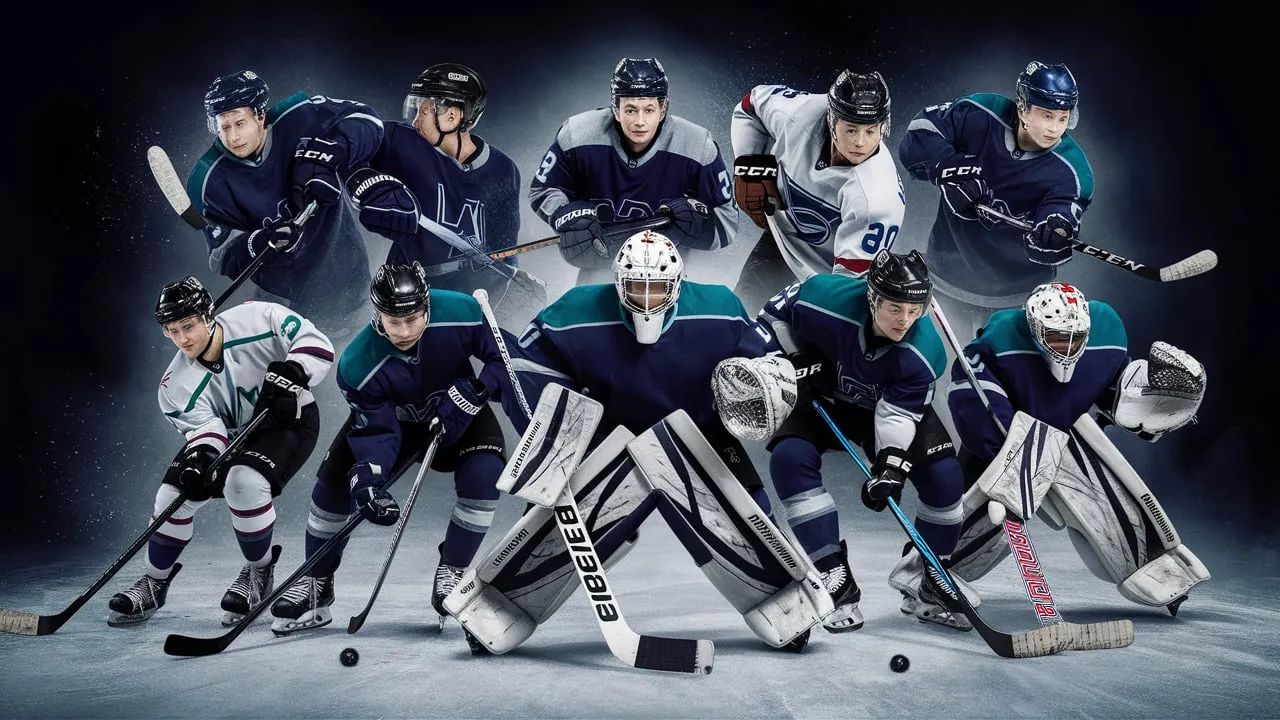
For defenders, playing solid defense is just as crucial as offensive play. Good defenders need to anticipate opponents’ moves, break up plays, and support the goalie in all situations.
The Importance of Defensive Skills
A study from the University of Ottawa revealed that NHL teams with stronger defensive metrics (including block shots, poke checks, and stick positioning) have a 25% higher chance of advancing to the playoffs.
Key Defensive Skills to Develop
- Poke Check: A technique for dislodging the puck from an opponent by using your stick.
- Body Positioning: Positioning your body to cut off passing lanes and prevent opponents from getting a good shot on goal.
- Shot Blocking: Defenders need to be willing to sacrifice their body to block shots, helping the goalie out in dangerous situations.
Drills to Improve Defensive Play
- 1-on-1 Defensive Drills: Practice keeping your body between the puck carrier and the net while trying to force turnovers.
- Poke Check Drills: Work on timing your poke checks to prevent opponents from entering the offensive zone.
Faceoffs: Gaining Possession
Winning faceoffs is an often-overlooked aspect of hockey, but it is crucial for gaining possession of the puck, especially at critical points in the game. Players who excel in faceoffs often have a tactical advantage, as they can immediately control the pace of play.
The Importance of Faceoffs
Data from the NHL shows that teams that win 55% or more of their faceoffs are significantly more likely to dominate possession and outscore their opponents in games.
Key Faceoff Skills to Develop
- Quick Draws: Learning to react immediately as the referee drops the puck to win the faceoff cleanly.
- Tie-Up Techniques: When you’re outmuscled, using a tie-up to block the opponent’s attempt at winning the puck.
- Hand-Eye Coordination: Quickly reacting to the movement of the puck and redirecting it toward a teammate.
Drills to Improve Faceoffs
- Faceoff Positioning: Practice your stance and grip on the stick to gain a better advantage.
- Reaction Time Drills: Improve your reaction speed with training drills using pucks dropped at unpredictable times.
Conditioning: Building Endurance for Consistent Performance
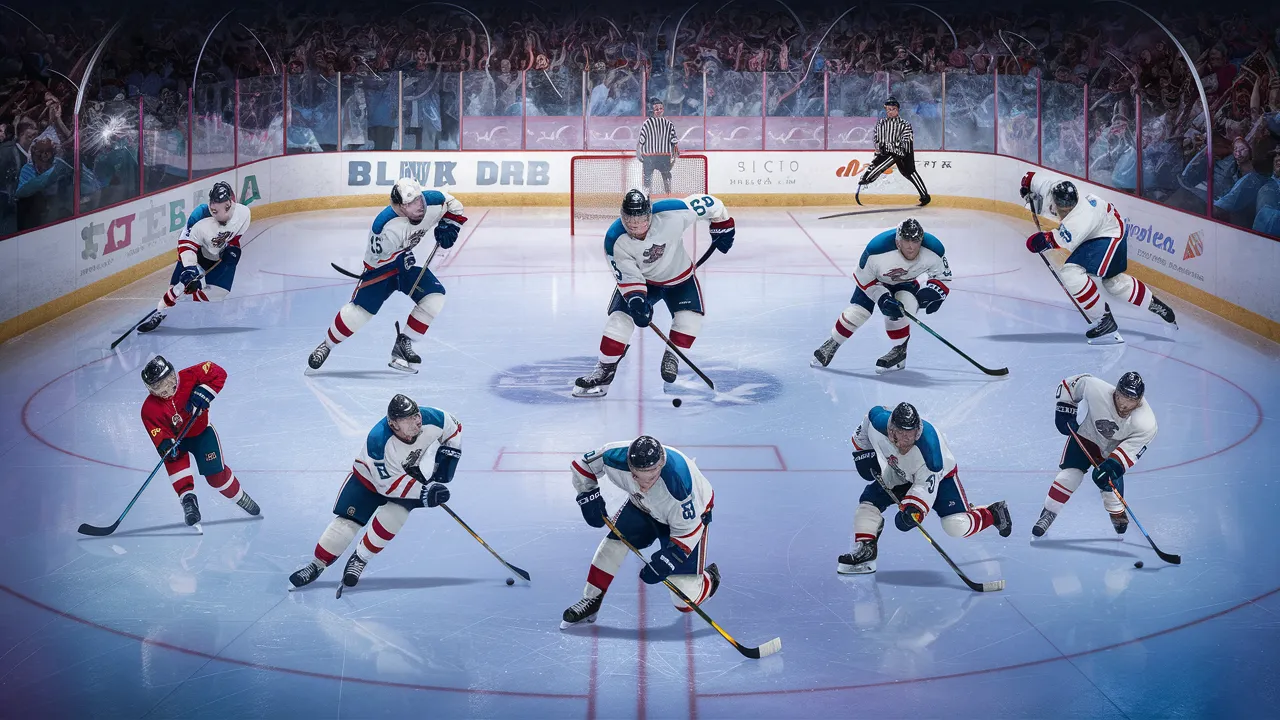
Hockey is a high-intensity sport that demands peak physical fitness. Building endurance, strength, and agility will help you maintain a high level of performance throughout the game.
The Importance of Conditioning
Players with superior conditioning are better equipped to skate harder, shoot faster, and perform better overall. According to the NHL’s performance statistics, players with better cardiovascular fitness outperform their peers by up to 20% in high-speed skating sprints during games.
Key Conditioning Elements to Develop
- Cardiovascular Endurance: Increases your ability to maintain a high intensity throughout the game.
- Muscular Strength: Enhances your ability to battle in front of the net and win puck battles along the boards.
- Agility Training: Sharpens your quick movements to change directions rapidly.
Drills to Improve Conditioning
- Interval Sprints: Sprint for short distances and rest briefly to build cardiovascular fitness.
- Agility Ladder Drills: Use a ladder to practice quick footwork and enhance your agility on the ice.
People Also Ask
What are the most important skills in hockey?
The most important hockey skills include skating, stickhandling, shooting, passing, and defensive positioning. Mastering these fundamental skills can significantly boost your performance on the ice.
How can I improve my skating in hockey?
To improve your skating, focus on drills that enhance your edge control, acceleration, and backward skating. Incorporating exercises like slalom skating and stop-and-go drills will help develop explosive speed and agility.
What is the best way to practice shooting in hockey?
The best way to practice shooting is to focus on accuracy and speed. Set up targets in the corners of the net and practice wrist shots, slap shots, and backhand shots from various angles. Quick release drills are also essential to beating the goalie.
How do I get better at stickhandling?
To get better at stickhandling, practice controlling the puck with both hands at high speeds. Using obstacles like cones or a tennis ball can improve your hand-eye coordination. Drills that emphasize one-handed stickhandling and puck protection are also beneficial.
Conclusion: Becoming a Complete Hockey Player
Mastering the top 10 hockey skills is the key to taking your game to the next level. Whether you’re a forward aiming to boost your offensive contributions or a defenseman looking to shut down opponents, improving these core skills will help you achieve greater success on the ice.
By consistently working on skating, stickhandling, shooting, passing, defense, faceoffs, and conditioning, you’ll be well on your way to becoming a complete player. Don’t forget that hockey is a team sport, and developing a good relationship with your teammates and understanding team dynamics will further enhance your overall performance.

